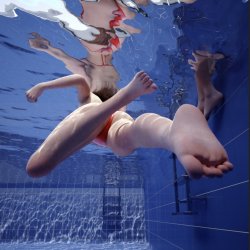Drop down menu
| Biography: |
Architect
Date of birth: November 26, 1955 Place of birth: Madrid Current address: Urbanization Caserío de Urgel nº 80, San Ildefonso Telephone and Fax: 921/47 05 65. akoaguirre@hotmail.com Juan Aguirre Vila-Coro (Madrid 1955), is an architect and has reconciled this profession with other activities in the field of Plastic Arts, first as a painter with traditional techniques (oil, acrylic and airbrushing) and then dedicated mainly to digital modeling. Digital art still has a way to go to be recognized by all the artistic community first, and by the citizenship afterwards (or the order is to the reverse?). The fact that the digital artist does not hold a brush in his hand yet arouses suspicion and suspicion. "That's not art," some say. The conservatism It has always been associated with the reception of the artistic work. Evil that weighs us, we continue with the mind in the eighteenth century under the dictatorship of the Fine Arts There is a clear agreement between current hyperrealism, as an artistic orientation, and digital art, as technical modeling. The digital solution seems even more subtle to me when the artist has a long background and architectural experience. This is the case of Juan Aguirre, an eloquent example of computational hyperrealism. Critic I would say that the conception of space is one of the most interesting aspects of his artistic universe. Using the technique of "mise en abyme", where the interior extends to infinity. The specular space is presented as a huge gallery (in several paintings, from Café at sunset, 2012, to El Cambio de Luces, 2018) or as urban landscapes. The most explicit picture for this technique is The disturbing invisible camera, 2018. Art Critic says: "For specular reflections, we must invoke the glass (its favorite material) and the surfaces that can function as a mirror. Glass is also present in showcases and everyday objects such as bottles, glasses etc. Its translucency fascinates the artist who imagines not only huge rooms, but also large transparent sculptures in open decorative spaces. Chromatics seems to be, in its deepest option, a lesson in Piet Mondrian's abstractionism. The artist uses three primaries: blue, red, yellow, and two non-colors: black and white. Mondrian is present with two paintings (fake, of course) in the famous Juan Aguirre gallery (Reflejos pastel con dama, 2018), but also in Sinestesia, 2016, and, more discreetly, in Bufet, 2012, for example. I would also like to leave a note on the secondary chromatic whose inspiration comes from the Rubik's cube (where orange and green appear), which has become a symbol in today's hyperrealism, since it allows the intersection of the squares of "artificial" colors, with the positional random. There are older objects, some present in cubist paintings or those of Pop art (newspapers, cigars, coffee cups, telephones), and objects of modern design (pencils, lego bricks, chairs, etc.) present in domestic interiors. On the street, among the most present are bicycles, as well as every day. |
| English speaker: | Si |
| Website: | http://www.aguirre-arte-digital.es |
| Participation Date: | Jul 10 2018 |
